
By Cheryl Morrison, USGS
Kasey Cantwell, NOAA Office of Ocean Exploration and Research
White Thunder Ridge, Glacier Bay National Park, AK
March 19, 2016
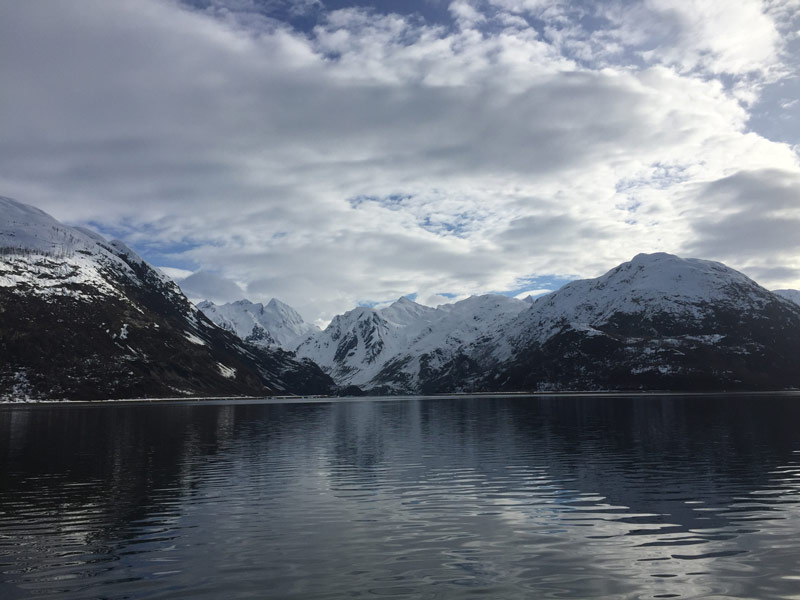
White Thunder Ridge, the site of our ROV and scuba dives investigating red tree corals. Image courtesy of the Deepwater Exploration of Glacier Bay National Park expedition. Download larger version (jpg, 3.4 MB).
Today was full of discoveries as we conducted the deepest and first-ever remotely operated vehicle (ROV) exploration of Glacier Bay National Park. Although some earlier exploration with scuba confirmed the presence of red tree corals (Primnoa pacifica) in shallow water areas of the Park, deeper regions have been minimally explored. Therefore, we did not know what to expect, or what habitats were most likely to be supportive of corals at deeper depths.
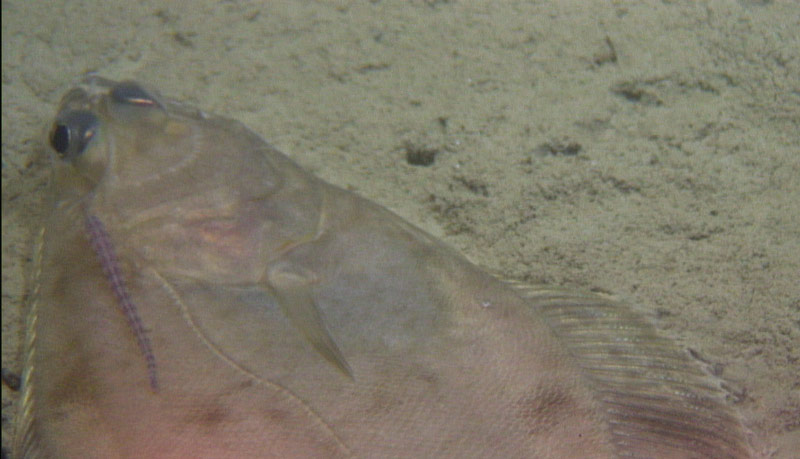
In a particularly sedimented area, we observed a few flatfish, including this one with a striped parasite. Image courtesy of the Deepwater Exploration of Glacier Bay National Park expedition and UCONN-NURTEC. Download larger version (jpg, 2.1 MB).
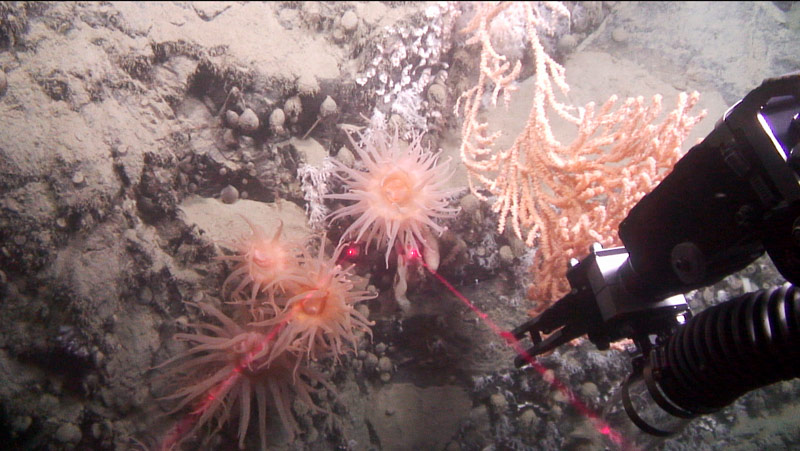
ROV Kraken2 approaches an area with several anemones, sponges, stoloniferous octocorals, and brachiopods to sample a colony of red tree coral. Image courtesy of the Deepwater Exploration of Glacier Bay National Park expedition and UCONN-NURTEC. Download larger version (jpg, 3.7 MB).
We started the dive at White Thunder Ridge at a depth of 230 meters, in a heavily sedimented area with little coral. As the dive continued, we ascended a steep wall of the fjord and noticed different patterns where the corals did and did not occur. Red tree corals were mostly on protruding, angular features and on the underside of overhangs. We began to target these features along the wall using bathymetry maps and sonar. Once we encountered features likely to support corals, we moved laterally along the outcrop in search of more colonies. We also moved upslope, hoping to find additional corals, determine the upper depth limits for the red tree coral, and characterize this dynamic habitat.
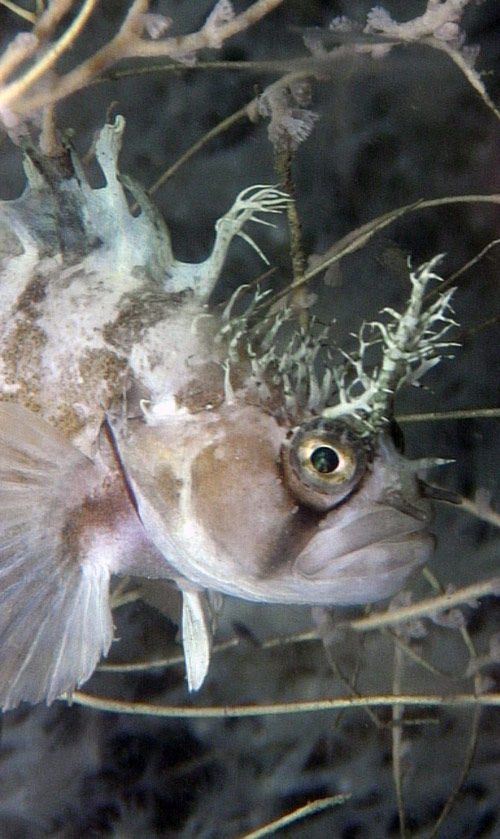
A beautiful decorated warbonnet we encountered during the first ROV dive. Image courtesy of the Deepwater Exploration of Glacier Bay National Park expedition and UCONN-NURTEC. Download larger version (jpg, 2 MB).
Towards the end of the dive, we found a spectacular tilted outcrop that had dozens of large red tree corals. The majority of these coral individuals were 1-2 meters in size and were more dense than elsewhere. We found another habitat for red tree corals was under horizontal overhangs where they are likely sheltered from debris falling from above. Together, these habitats may be described as “Hanging Coral Groves,” where corals are concentrated relative to other neighboring areas, similar to groves of trees along river banks on land. In the Gulf of Maine, a sister species of our red tree coral, P. resedaeformis, also inhabits the underside of overhangs, and this habitat has recently been described as “Hanging Coral Gardens.”
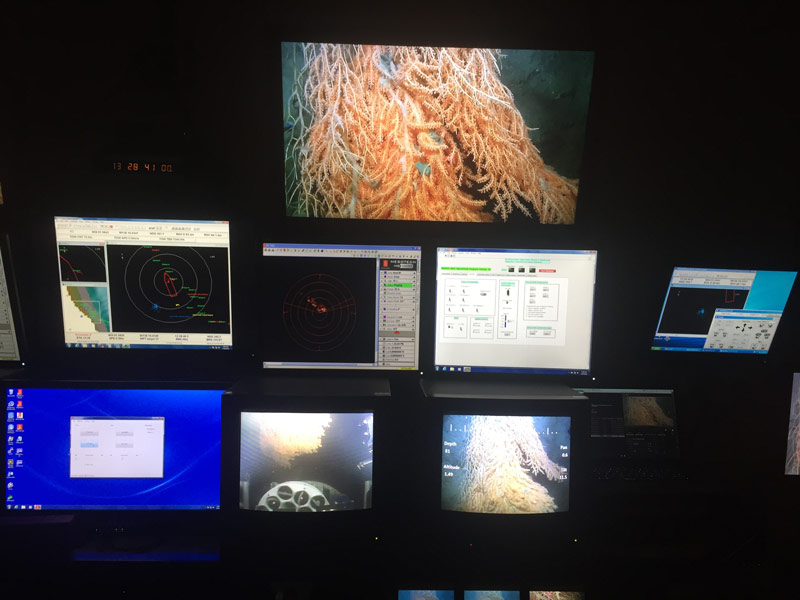
View from the control van as ROV Kraken2 investigates a large red tree coral colony. Image courtesy of the Deepwater Exploration of Glacier Bay National Park expedition. Download larger version (jpg, 3.3 MB).
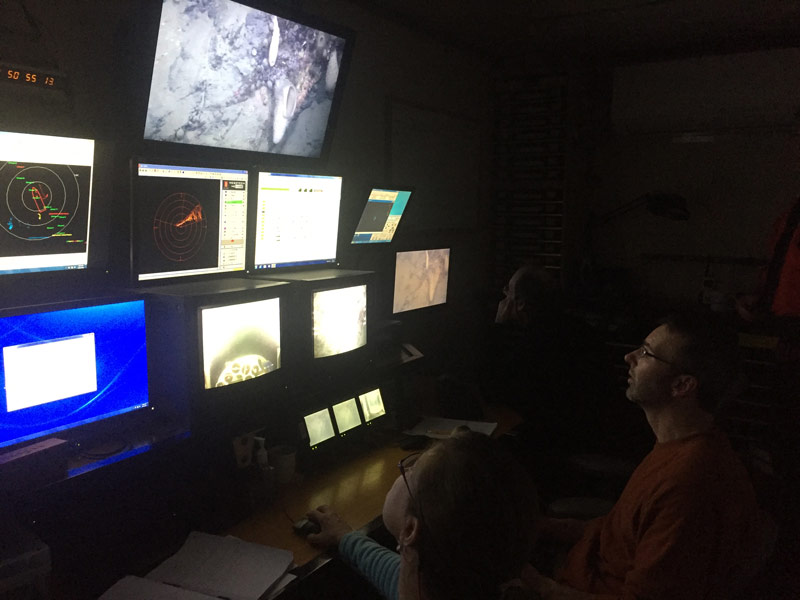
Kevin and Cheryl follow the ROV dive from the control van. Image courtesy of the Deepwater Exploration of Glacier Bay National Park expedition. Download larger version (jpg, 2.6 MB).
Other highlights of the dive include a number of cod fish residing in and around corals, a large scaled crab next to a wall covered by stoloniferous octocorals, and several different types of fish. We also encountered a unique decorated warbonnet hiding in a large Primnoa colony.
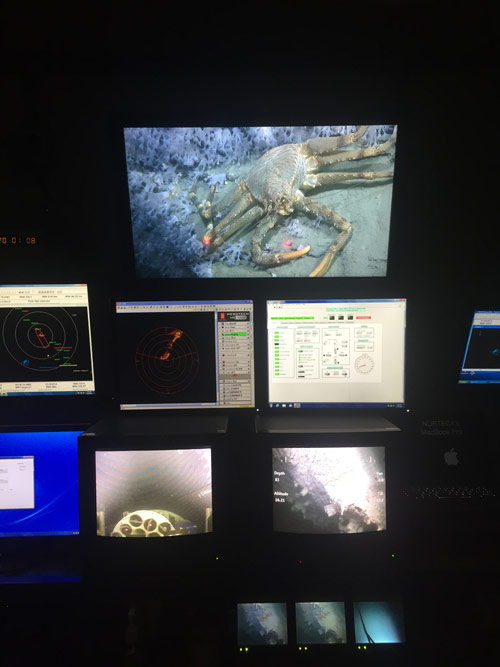
The ROV control van as we investigated a scaled crab next to a wall of stoloniferous octocoral. Image courtesy of the Deepwater Exploration of Glacier Bay National Park expedition. Download larger version (jpg, 3 MB).
A large part of this project involves a comparison of the emergent red tree corals that exist shallower than their usual depth range, and their deeper counterparts, like those we’ve explored today for the first time in this level of detail. To accomplish this objective, three scuba dives were also conducted at White Thunder Ridge. Our dive team collected a number of red tree coral samples for genetic, isotope, and histology studies. Once complete, we will have a more informed picture of the habitat requirements and connectivity between places like the “Hanging Coral Groves” we discovered today and the large colonies that the project divers found between approximately 14-25 meters depth.

The ROV team recovers the depressor weight at the completion of the first ever ROV dive in Glacier Bay National Park. Image courtesy of the Deepwater Exploration of Glacier Bay National Park expedition. Download larger version (jpg, 3.4 MB).